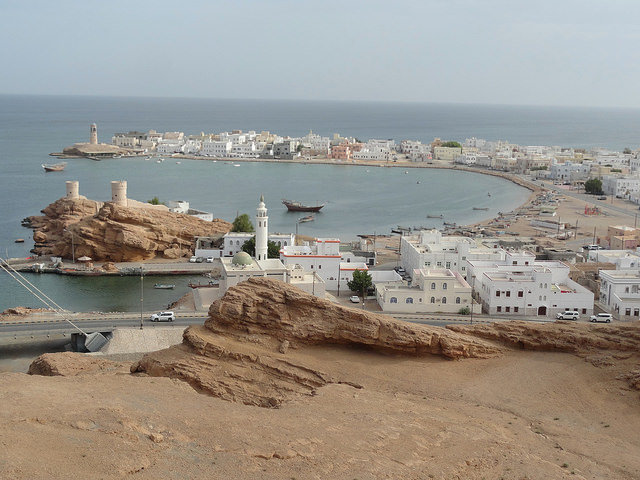Al Sharqiyah – Azure seas and virgin beaches, resting turtles, dramatic gorges and serene wadis.
There are three distinct areas to Al Sharqiyah including the coastal area on the Indian Ocean, the desert dunes and oases, the urban city of Sur and its suburbs.
Sur is a placid coastal town, which has played an important role throughout history, particularly in overseas trade with East Africa. The city is situated on a large lagoon, which is used today as a natural port.
Sur is famous for its dhow yard where traditional fishing vessels such as dhows and sambuks are built. This is becoming a popular attraction for visitors along with the city’s two forts and small Maritime Museum, which charts the history of shipbuilding in the town.

Ferry trips across the narrow khawr or inlet transports visitors to the small and traditional fishing village of Ayega. Wadi Shaab is a perennial water spring and one of the most beautiful places in the region.
There are many springs, caves and falaj or irrigation canals in the Al Sharqiyah region. In Ibra, the hot springs of Ain al Milah are famous for relieving skin complaints, while in Al Mudaibi, the springs of Ain al Harid are also known for their therapeutic value.
The second largest cave chamber in the world was discovered in Wadi Bani Jabir in the Al Sharqiyah region. The Majlis al Jinn (Home of the Genie) is estimated to be about the size of seven aircraft hangars and more intrepid visitors can explore the cave with experienced climbing guides.
Inside the cave are colourful stalactites and stalagmites. There is another cave system close-by with over five kilometres of passages to explore for the experienced cavers.
Masirah and Alexander the Great
Masirah, Oman’s largest island is said to be Alexander the Great’s base, today, it is a quiet island with the main occupation of the islanders being weaving and making fishing nets. Masirah is accessed by a daily ferry service and by Oman Air’s domestic flights.
The beaches of Ras Al Hadd and Ras Al Jinz are not only famous nesting grounds for green turtles but Ras Al Hadd has historic importance as a hidden air base, which was built during World War II, and traces of its presence still remain.
In absolute contrast lie the great Wahiba Sands, where longitudinal dunes which are 200 kilometres long and 100 kilometres wide soar up to 150 metres and appear in a variety of hues from orange to deep amber. This provides a great outdoor experience and is best explored in 4×4 vehicles. Most tours include a stop at a Bedouin campsite where guests can share a meal with the locals and gain a taste of authentic desert life.
